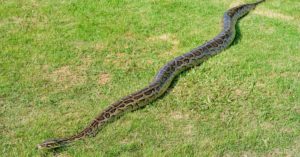The American alligator is native to the swamps, streams, rivers, and lakes of the southeastern United States. These ancient animals aren’t usually aggressive, but they’re powerful apex predators, and their space should always be respected. It’s a good idea to give them a wide berth at all times, but this is especially true during mating season. This is a time of relatively high activity for these reptiles. There’s competition for mates; they’re protecting territories, defending nests, and defending the newly hatched young. So, when is alligator mating season? Read on to find out what time of year alligators breed.
When is Alligator Mating Season?
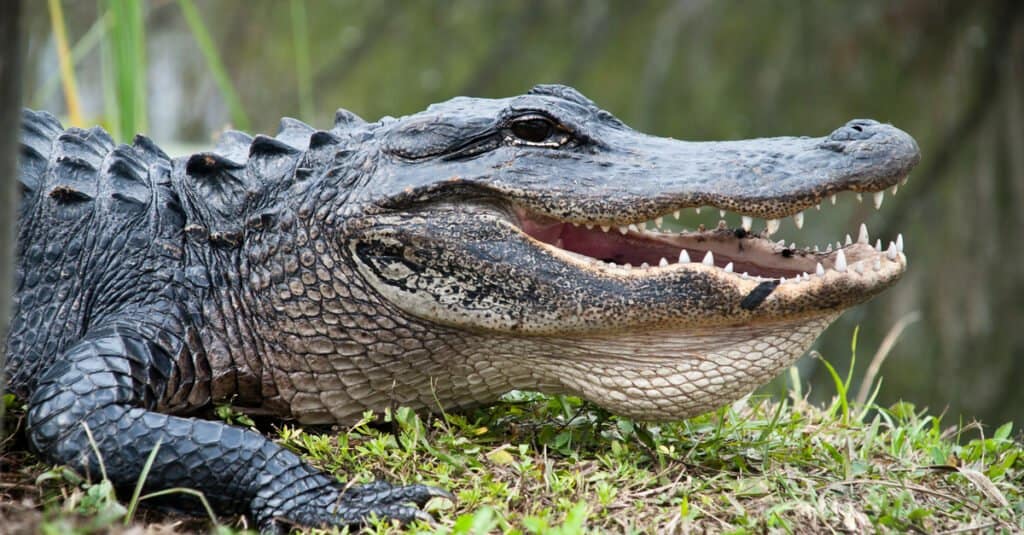
Alligators mate in the spring, with April courtship rituals leading into May mating.
©RICIfoto/Shutterstock.com
Courtship rituals for alligators begin in the spring, typically in April. As springtime brings warmer weather, alligators begin to warm up and travel to new areas searching for mates. After the period of courtship, mating typically takes place during May and June.
This is the average timing for alligator mating. However, many factors can influence the timing to be a bit later or earlier. The primary factor is the climate, and while warmer years or geographical regions may see an earlier mating season, colder conditions might mean a delayed mating season.
Mating Behavior and Rituals
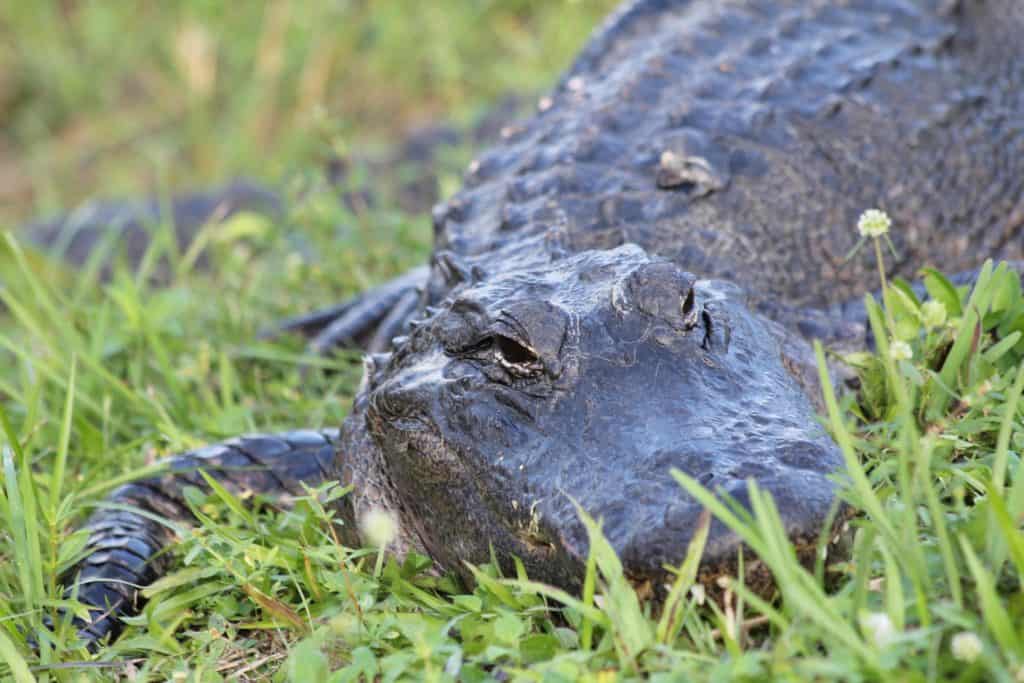
Male alligators bellow, slap the water, and use infrasound to gain the attention of female mates.
©Allen McGregor / CC BY 2.0, Flickr – License
During their mating period, alligators are most active during dusk and dawn. A male or “bull” alligator will make bellowing sounds to attract females and warn other males to keep their distance. When mate-ready males come into contact, the results can be gruesome. During mating season, they can be vicious fighters as they compete to secure available females and territory. They may come away from the battle with missing legs or blinded eyes. In addition to bellows, males will slap the water and send out vibrations to gain female attention. They also use infrasound to gain the attention of fertile females, which are sounds of lower frequency than humans can detect. Alligators also use scent to attract mates, releasing a pheromonal musk. In captivity, large groups often gather for courtship and mating, but it’s unknown how often this happens in the wild.
When alligators find a potential mate, they’ll engage in tactile courtship behaviors to start the process of mating. They may rub and press each other’s snouts and bodies or push one another underwater. This shows their strength and proves they’re superior to other suitors. After successful mating, eggs are usually laid in June, into July at the latest. A study in Molecular Ecology provided support for the idea that male alligators successfully mate with more than one female and that females can produce clutches fathered by more than one male.
Alligator Mating Season Variation
April marks the beginning of the mating season in Florida, Louisiana, Mississippi, Georgia, North Carolina, and South Carolina. During this time, alligators will begin courtship, resulting in mating during May or June. According to Texas Parks and Wildlife, mating season begins a bit earlier in Texas, occurring from March through May. Overall, throughout their range, alligators begin to mate when the weather warms in the springtime. Variation in temperature in some regions or during certain years may lead them to get started a bit later or earlier.
Mating Season for the Chinese Alligator
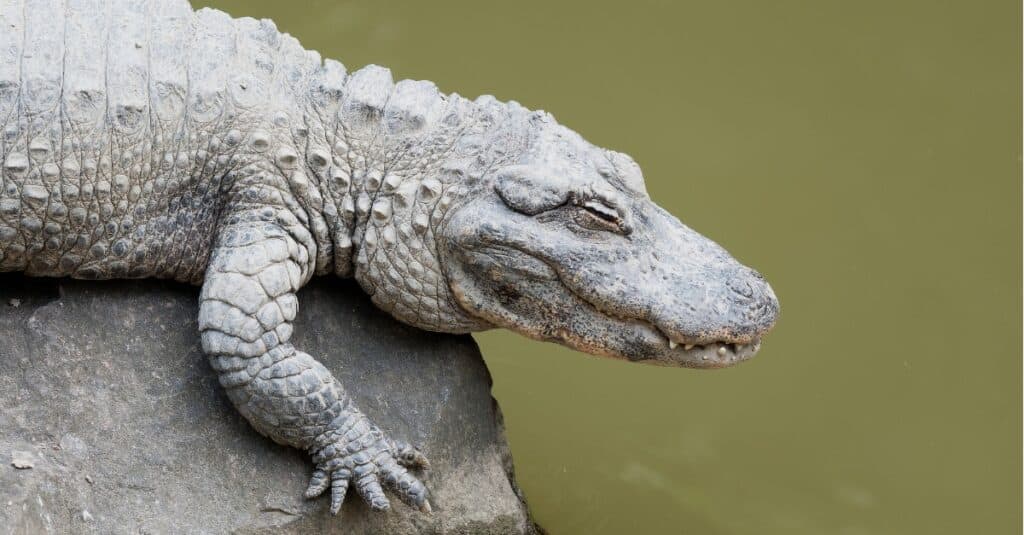
The Chinese alligator mates in June and lays eggs in July or August.
©yanjf/Shutterstock.com
There are two existent species of alligators worldwide. So far, we’ve focused on the mating season of the American alligator. The Chinese alligator is native to the freshwater habitat of the Yangtze River in China. The local name for this animal is ‘Yow-Lung or ‘T’o,’ meaning dragon. Also known as the Yangtze alligator, the Chinese alligator is a smaller species and is critically endangered, unlike the American alligator. Mating season for this species happens once a year, typically in June. In warmer years, this may take place a bit earlier. Like the American alligator, this species practices polygamy. Males will often mate with multiple females, and females will mate with multiple males. Eggs are laid in July or August, and babies hatch from the eggs after an incubation period of roughly 70 days. These eggs are also very temperature-dependent, as both alligator species show temperature-dependent sex determination, which means that the incubation temperature influences whether the baby will be born male or female.
Alligator Nesting Behavior
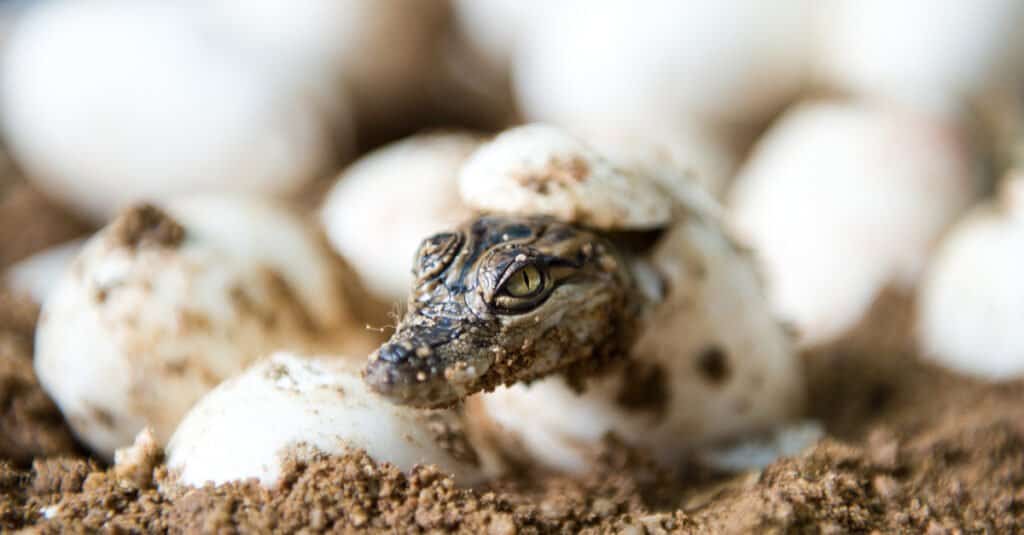
Female alligators build nests and monitor them, guarding their eggs against predators.
©hxdbzxy/Shutterstock.com
After mating, the males show little involvement, and the females will be the ones to be aware of as they’re out on the move. A female will search around to find the ideal spot to build her nest. She’ll construct the nest out of mud and vegetation on the ground, usually within 10 to 20 feet of water. Alligator mothers tend to prefer sites near isolated ponds in marshy interior areas. These are large mounds, several feet high and up to 10 feet wide. Here, she’ll lay a clutch of up to 50 eggs that will be incubated deep within the mound. A clutch of about 35 eggs is the average, and these eggs will incubate for roughly two months.
The females stay near the nest to keep an eye out and guard it against egg-snatching predators. The eggs are very sensitive to temperature, so the mother alligator will ensure the nest stays warm in addition to monitoring for predators. Sunlight and heat from the rotting vegetation help keep the eggs warm, but if they get too warm, the female alligator may douse the mound with water to cool it down. After the period of incubation, baby alligators emerge from their eggs in late summer or even early fall. They stay in the water near their mother for the next six months, during which the female alligator will fiercely protect them from predators and intruders. The young will stay close to the mother for up to 2 years.
The photo featured at the top of this post is © Marc Pletcher/Shutterstock.com
Thank you for reading! Have some feedback for us? Contact the AZ Animals editorial team.



